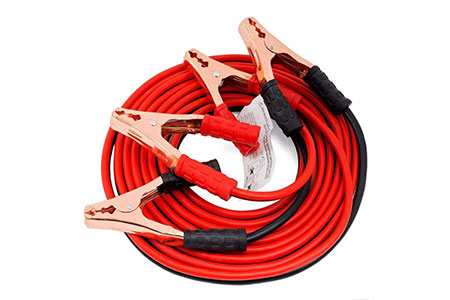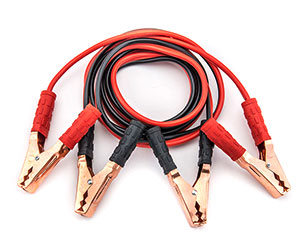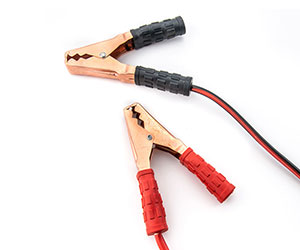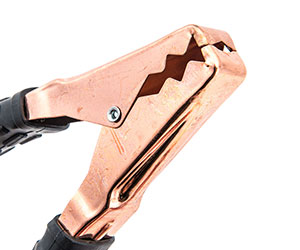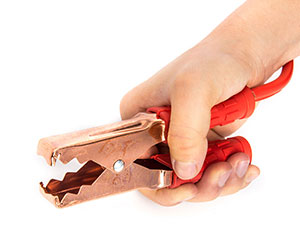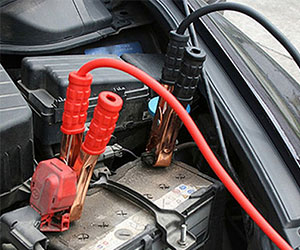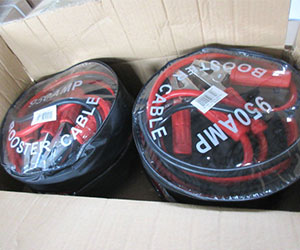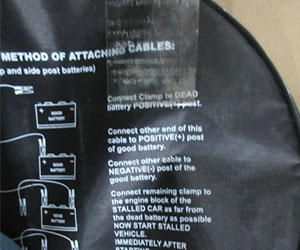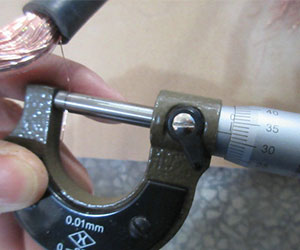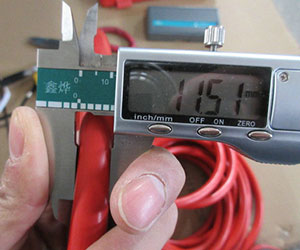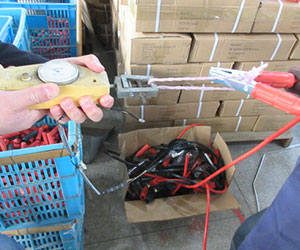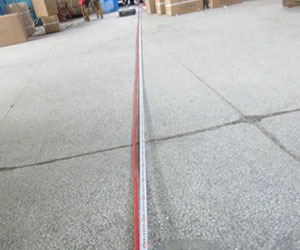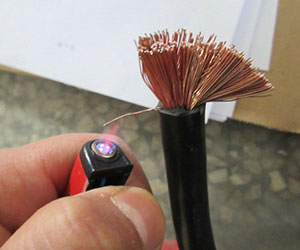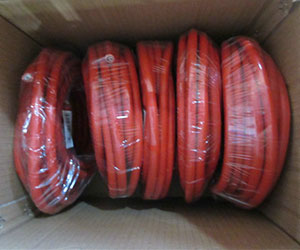Car jumper cable
Specification:
-Material: copper-clad aluminum +iron+pvc
-Size: 0.30*133*OD12.5MM
-Line length: 2.5M
-Clips: heavy-duty galvanized clips
Feature:
-Connect the car battery for charging
-Insulator handle
-Easy to use
-Powerful&reliable performance
-Hassle-free jump start for your car
-Jumper cables to start cars, trucks, and other vehicles in case of a dead battery or cold diesel vehicle battery in winter.
-These high-quality insulated jumper cables bring your vehicle’s battery back to life again in seconds.
-With a 2.5M length, you can easily connect to another vehicle’s battery without worrying about space.
What is the heavy-duty jumper booster battery charger?
Booster cables are a safe and effective way to jumpstart a car. A heavy booster cable is for when a car’s battery is dead or weak. The booster cables connect two vehicles, allowing one car to transfer its power to the other. It will enable the vehicle with the dead battery to quickly start and return to the road. A booster cable is an essential tool for any driver, as it can use in almost any situation where a car needs help starting up.
Is it worth backup the car booster cable in the car?
Having a car booster cable in your car is a must-have for any driver. You can use it in an emergency, such as when your car battery dies or you need to jumpstart another vehicle. Keeping a car booster cable in your car at all times is an easy and inexpensive way to prepare for any unforeseen circumstances. It’ll save you time and money, but it could also save someone’s life if they get stuck on the side of the road. Therefore, it is always worth having a car booster cable backup in your vehicle.
You have to follow the steps carefully when boosting a car battery. Is the battery in your vehicle dead? The following options are available to you, along with some safety tips.
Steps to boost your car
1. Plug a red jumper cable clamp into the dead battery’s positive (+) terminal.
2. Plug the other red cable clamp into the working battery’s positive (+) terminal.
3. Put a black cable clamp on the negative (-) terminal.
4. Connect the other black cable clamp to the disabled vehicle’s engine block or a significant engine component. Its connection must be at least 30 cm from the battery to prevent an explosion. Don’t connect the jumper cable to the dead battery’s ground terminal or the body.
5. Start the car that’s boosting you.
6. Follow the cold-weather start recommendations in the owner’s manual to start the disabled car. The starter should be for at most 15 seconds.
7. Reverse the connection sequence to remove the cables.
What’s the best jumper cable?
Consider what type of jumper cable to buy and keep in your trunk. To help you pick wisely, here are some good rules of thumb.
You’ll need to think about how long the cables should be, what gauge you need, and what type of clamp they need to make charging safe and effective. You need to know this:
The wire gauges
“Wire gauge” means how thick the wires are. Cables with a lower number are thicker. Because a jump start needs a high current flow, heavy-duty lines are better. It’s impossible to draw enough current with thin bargain-priced lines.
Insulating jumper cables
You should expect heavy insulation on heavy-duty cables. Jumpstarting generates heat through the wires, so more severe insulation reduces it. Comparing the side of the line by the side may look like heavy gauge cables, but a cheaper price tag could mean you’re getting a better deal.
Length
That’s a big deal. The other vehicle needs to be behind you on a busy road.
Heavy duty clamps
The cables you choose should have heavy-duty clamps that connect to a battery securely with either the top or side terminals. Under your hood, you should be able to join the clamps to a good ground, like a bolt. In addition to being bigger, heavy-duty clamps keep your hands away from sparks. Since the clamps are conductive, the handle portion should have thick and secure insulation to keep your hands safe.
For car jump Starter and jumper cables—Which is better when broken down?
When your car won’t start or breaks down while driving, what is the most likely cause? While even the most straightforward vehicle is incredibly complex, just a handful of essential issues contribute to non-starters and breakdowns. And the most common is easy battery problems.
When addressing battery problems when broken down, you have two options: the traditional jumper cables and car jump starters. But which is better when broken down depends on a variety of factors.
Jumper cables require less space
Jumper cables, even those that offer a more extended range, can easily be rolled up and stored underneath a seat. Jump starters have a larger footprint and must keep in the trunk. It is not a problem for most cars, but this can be a deal-breaker for smaller vehicles with limited trunk space.
Jumper cables do require charging
It would help if you charged jump starters a few times a year. It can be problematic if you need to remember. You will be out of luck when broken down. You’ll likely only get three or four years out of your jump starter, even if you take good care of it. Jumper cables can last a lifetime and outlast your car. They are much cheaper.
Jump cables no affected by temperature
Breaking down in dangerously low temperatures is scary, and relying on a jump starter can be even more difficult. Average jump starters perform worse in cold weather, and as the temperatures drop, that performance further deteriorates. Jumper cables will work no matter the temperature.
If you are not sure what your car needs, please get in touch with Tiroflx. We can help you figure out the best battery charger cables for your needs, keeping you safe no matter where you are.

